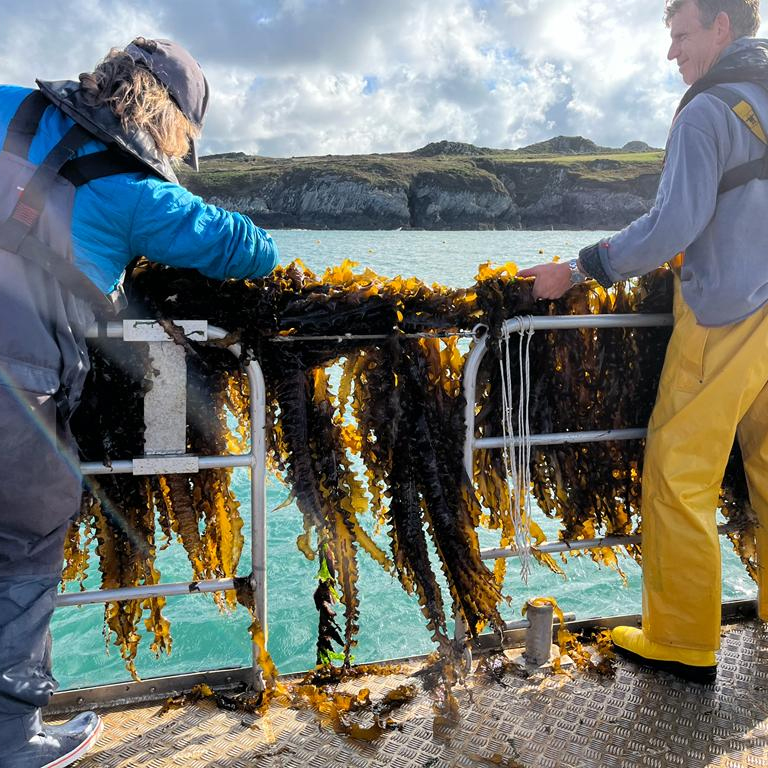
Shaped by the sea

Pentre Ifan is a 5,000-year-old monument of disputed purpose which sits within the northern boundary of the Pembrokeshire Coast National Park. This neolithic construction stands on the hillside near the Preselli bluestone quarries where the stones to build numerous structures of the ancient era were cut, including those for Stonehenge, transported some 140 miles away.
The dolmen consists of three pointed standing stones upon which a larger capstone is precariously perched, almost seeming to be floating above the ground and ready to slip away through the hillside at any second. The cap points north but following the path of the valley your eyes are quickly led out west to the sea.
Within the bounds of the Pembrokeshire Coast National Park, which traces almost the full length of the county’s coastline, you find a long history of a people tied to and shaped by the sea. As Welsh historian and writer J. Gerain Jenkins notes, there isn’t an area in the county further than eight miles from the sea or a waterway, whether that be the Irish Sea or the Cleddau estuary or another of the many paths for travel and trade.
Part of my own story finds its roots on this coastline. My Grandad grew up in Hazelbeach, a small village tucked between the once renowned Pembroke Dock and Milford Haven. Even today, standing on the stony beach, where shards of broken blue china are tumbled among the grey pebbles, the view across the water is suddenly dominated by huge vessels, most commonly ferries to Ireland, though in the county’s maritime heydays it saw the bustle of a busy trading port.
The natural haven of the mouth of the Cleddau creates a wide gap in the coastline which runs into the heart of the county. Since the earliest days of civilisation on these shores this watery pathway has shaped the fortunes and culture of the area. Neolithic settlers, iron age traders, Viking raiders, Norman invaders, as well as fishers, tradespeople, and visitors from all eras found their way into the protective shores and made their mark. Some are left behind today in place names, castle ruins, and family trees.
Despite these years of industry, as the UK entered the post-war years the prosperous years of Pembrokeshire’s fishing and trade came to an end. Today exploring the docks of Pembroke and Milford Haven on an early winter day feels like a half-forgotten world, many shops and attractions stand closed in the quiet season. Looking into the bay of Pembroke Dock by the old Martello Tower, surrounded by abandoned dock buildings, an oil refinery smokes on one side, while a scattering of wind turbines and muted colourful houses face them from the other.
However, it may be a new dawn is in store for Pembrokeshire, centred around the UK’s smallest city of St David’s. The city itself, small though it may be, bustles with independent shops selling local produce throughout the year. Vital organisations making progress on the sustainable future we so desperately need are thriving. There are those making headway in seaweed farming in Câr-y-Môr. The Bug Farm is providing important outreach and research in sustainable food systems. The Caerhys farm has seen the revival of the Welsh Black Oats, marking a win for both the past and future of crop diversity. There are many groups promoting local, sustainable fishing and finding ways to make this more environmentally friendly.
While a past of bluestone monuments and large-scale fishing may be behind them, the potential for Pembrokeshire’s future looks hopeful and may once again serve as an example for other regions of the UK.
Written by Elizabeth Lee Reynolds
